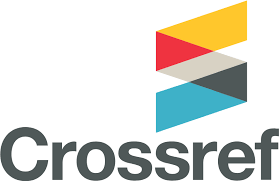Semantic and Cognitive Study of Dictionary Definitions of English Legislative Texts in the Context of World Information Technology Development
Abstract
The article examines the semantic and cognitive aspects of dictionary definitions in legislative texts in order to identify their features in the context of information technology development of society. It is noted that ambiguity and polysemanticity in legislative definitions can lead to legal disputes and obscurity in law enforcement practice. The author explores US and EU legislative and legal documents, focusing on the topics of "information technology" and "artificial intelligence." Hybrid terms are discussed as multicomponent terminological combinations containing initial abbreviations, such as AI programming and HTN planning.
For the analysis, we have chosen regulations and prescriptions concerning "information technology" and "artificial intelligence": H.R.5356 – To establish the National Security Commission on Artificial Intelligence; The National Strategy to Secure Cyberspace; Executive Order USIA; National Strategy in Cyberspace (USA); The Comprehensive National Cybersecurity Initiative.
The article examines syntactic relationships within terminological combinations, with particular emphasis on phrasal combinations, which are a separate type of terminology. Phrasal combinations are characterized by structural similarity to phrases, and syntactic relationships in them are expressed through conjunctions and prepositions.
The study focuses on the need for a detailed analysis of nuclear terms with regard to their semantic and cognitive features. This will allow a deeper understanding of exactly how terminological constructions are formed and function in a scientific and professional context.
As a result of the analysis, it was found that the most productive way to form definitions is to create two-component combinations, which allows you to transmit information more accurately and reasonably. The work can be used for further research in legal lexicography and terminology.
Downloads
Metrics
References
Голованова Е. И. Введение в когнитивное терминоведение : учеб. пособие. М., 2011.
Ивина Л. В. Лингво-когнитивные основы анализа отраслевых терминосистем (на примере англоязычной терминологии венчурного финансирования). М., 2003.
Кубрякова Е. С. В поисках сущности языка. Когнитивные исследования. М., 2012.
Лейчик В. М. Элементы терминоведческой теории текста / Стереотипность и творчество в тексте / отв. ред. М. П. Котюрова. Пермь, 2002. – С. 63-77.
Свойкин К. Б. Дискретные характеристики речевого смысла / Вестник Мордовского университета. – 2008. – № 3. – С. 159–162.
Ткачева Л. Б. Гибридное образование – путь к интернационализации терминологии / Взаимодействие языков на разных уровнях и научно-технический перевод : тез. докл. и сообщений. Орел, 1987. – С. 24-29
Шапочкин Д. В. Метод когнитивного анализа дискурса в лингвистике / Вестник Челябинского государственного университета. – 2013. – № 10(301). – С. 101–107.
Cobuild English dictionary for advanced learners. – 6th ed. – Great Britain, 2001.
Longman dictionary of contemporary English: the compl. guide to written a spoken English: over 80 000 words and phrases. – 3. ed. – Harlow (Essex), 1995.
The Oxford dictionary of English etymology / C. T. Onions. Oxford, 1960.
The Shorter Oxford English dictionary on historical principles / Prep. by W. Little et al. ; Rev. and ed. by C. T. Onions. – 3rd ed., compl. reset with etymologies rev. Oxford, 1973.
Copyright (c) 2025 Алсу Габдрахманова

This work is licensed under a Creative Commons Attribution 4.0 International License.
The authors, which are published in this journal, agree to the following conditions:
1. Authors retain the copyright to the work and transfer to the journal the right of the first publication along with the work, at the same time licensing it under the terms of the Creative Commons Attribution License, which allows others to distribute this work with the obligatory indication of the authorship of this work and a link to the original publication in this journal .
2. The authors retain the right to enter into separate, additional contractual agreements for the non-exclusive distribution of the version of the work published by this journal (for example, to place it in the university depository or to publish it in a book), with reference to the original publication in this journal.
3. Authors are allowed to post their work on the Internet (for example, in a university repository or on their personal website) before and during the review process of this journal, as this may lead to a productive discussion, as well as more links to this published work (See The Effect of Open Access).










